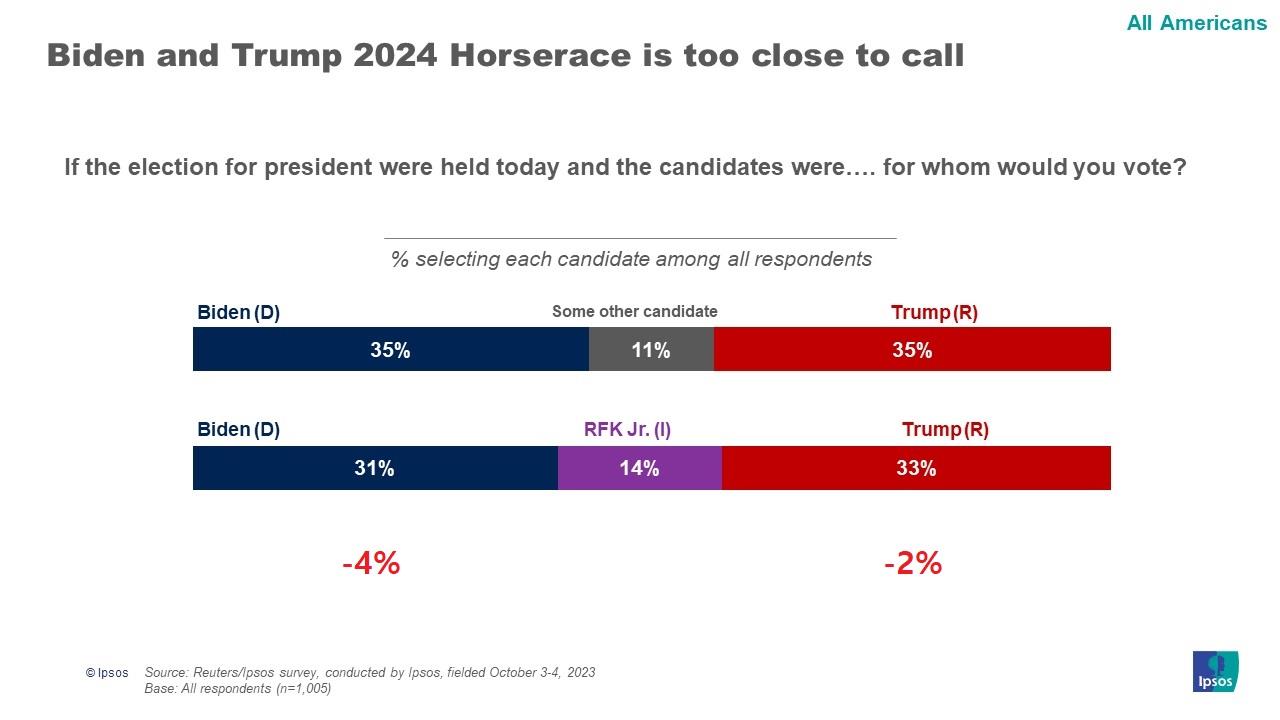Video:
Take our online poll:
AI Analysis:
Third-party candidates in the United States have a long history, and their success and impact on presidential elections over the past 70 years have varied. Here's a brief overview of some key third-party candidates and their impact during this period:
1940s and 1950s:
In the 1948 presidential election, Strom Thurmond ran as the States' Rights Democratic Party candidate (Dixiecrat), winning four Southern states and receiving 39 electoral votes. Henry Wallace ran as the Progressive Party candidate in 1948 but did not win any states.
1960s:
George Wallace, a segregationist, ran as the American Independent Party candidate in 1968, winning five Southern states and 46 electoral votes.
1992:
Ross Perot ran as an independent candidate in the 1992 presidential election. He received 18.9% of the popular vote but did not win any electoral votes. Some argue that his campaign helped Bill Clinton win against incumbent President George H.W. Bush by splitting the conservative vote.
1996:
Ross Perot ran again in 1996, this time as the Reform Party candidate. He received a smaller share of the popular vote (8.4%) and no electoral votes.
2000:
Ralph Nader, running as the Green Party candidate, received 2.7% of the popular vote, with some believing his candidacy may have cost Al Gore the election by siphoning off votes in Florida.
2012 and 2016:
Gary Johnson, running as the Libertarian Party candidate, received 1% and 3.3% of the popular vote in the 2012 and 2016 presidential elections, respectively. Jill Stein, running as the Green Party candidate, received 0.36% and 1% of the popular vote in the 2012 and 2016 elections, respectively.
2020:
Jo Jorgensen, the Libertarian Party candidate, received about 1.2% of the popular vote. Howie Hawkins, the Green Party candidate, received about 0.3% of the popular vote.
The impact of third-party candidates on presidential elections has been mixed. In some cases, they have played a role in shaping the outcome by drawing votes away from one of the major party candidates. The most notable example is Ross Perot in 1992, who likely affected the outcome of the election by drawing votes away from the Republican incumbent. In other cases, third-party candidates have had limited influence and failed to win any electoral votes.
Overall, third-party candidates have historically faced significant challenges in breaking the two-party duopoly in American politics. The winner-takes-all nature of the Electoral College system, as well as the barriers to ballot access and media attention, make it difficult for third-party candidates to compete on an equal footing with the major parties. Nonetheless, they continue to be a part of the American political landscape and sometimes have a notable impact on elections.
Chart:

References:


Comments